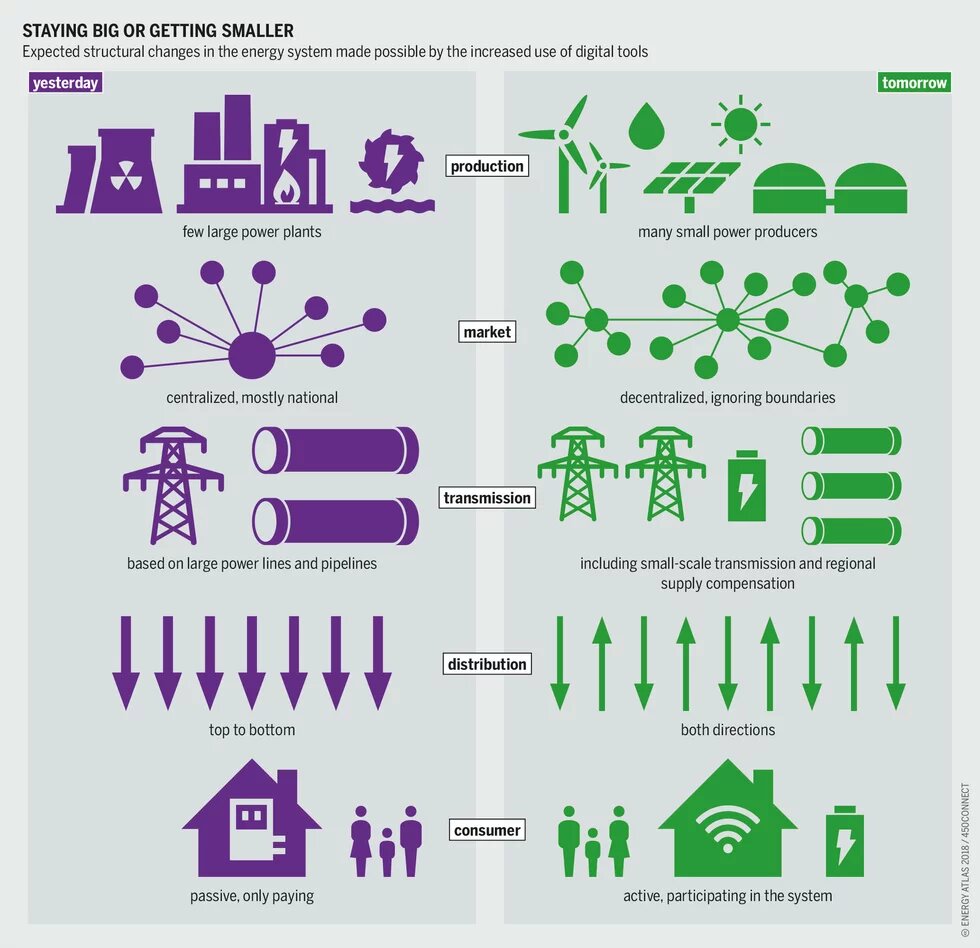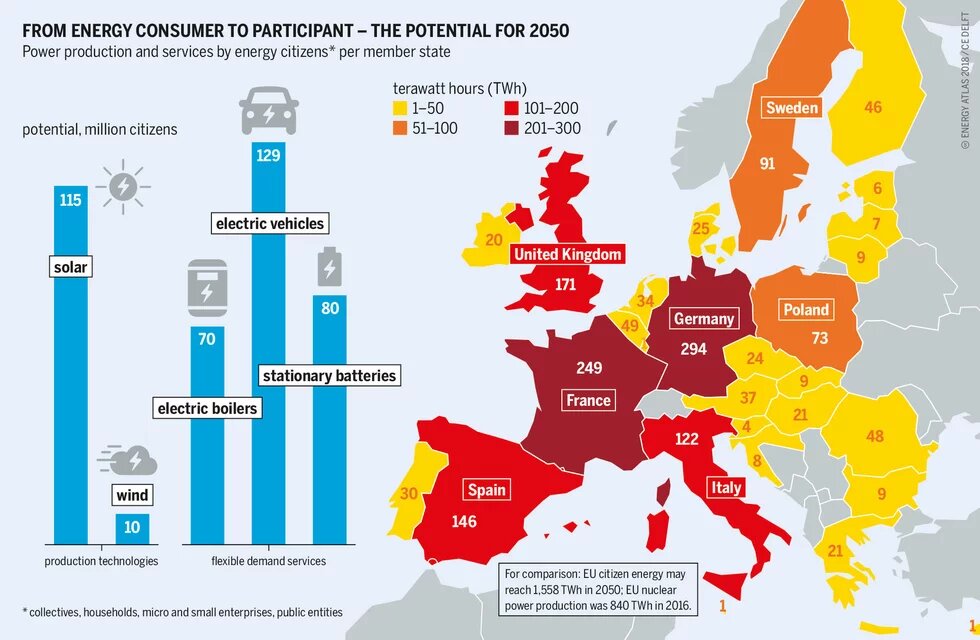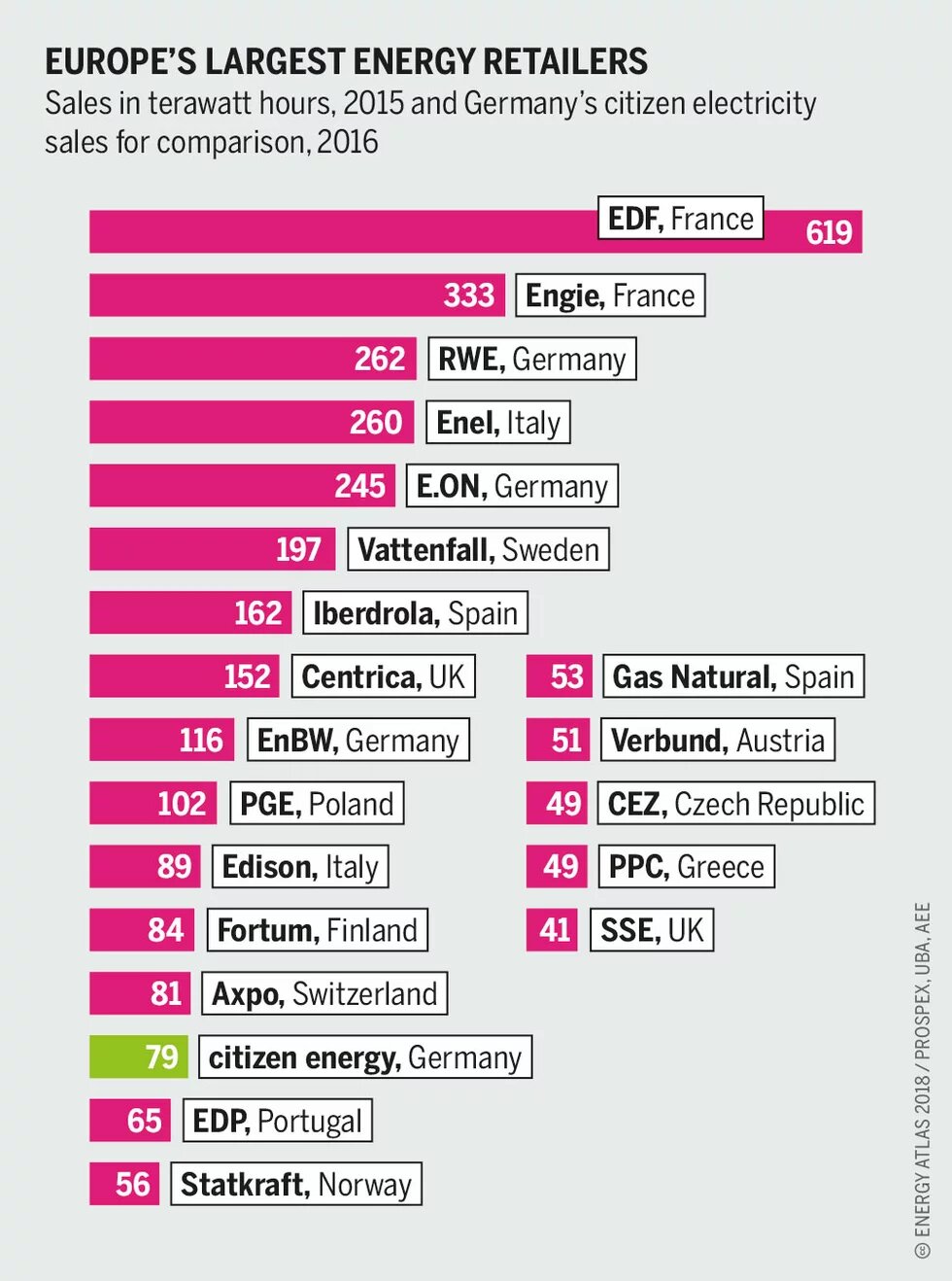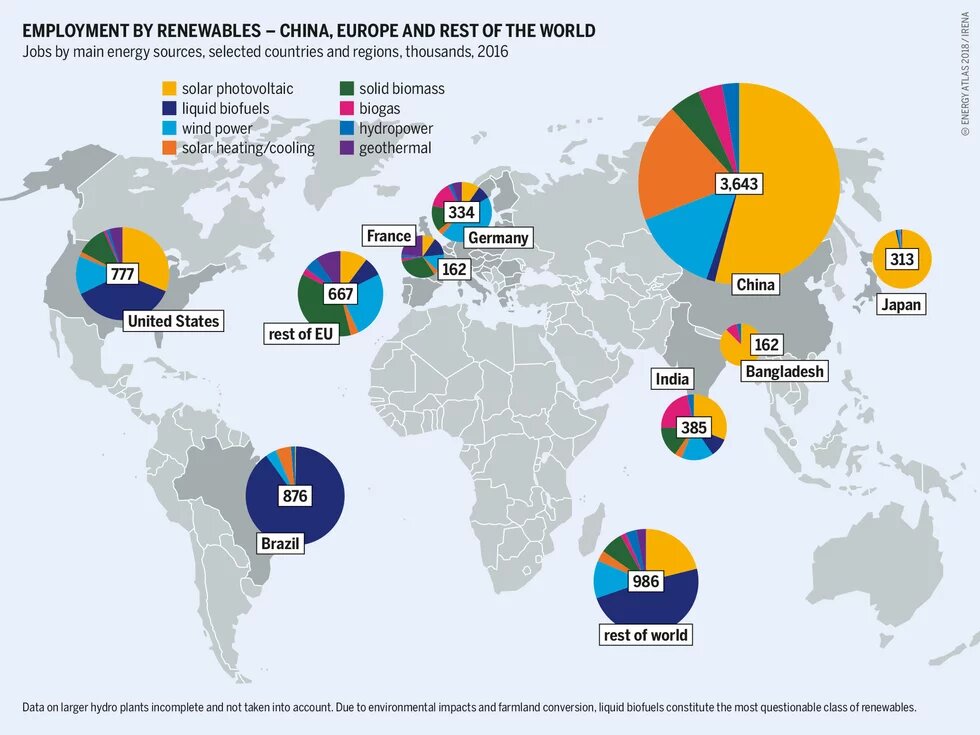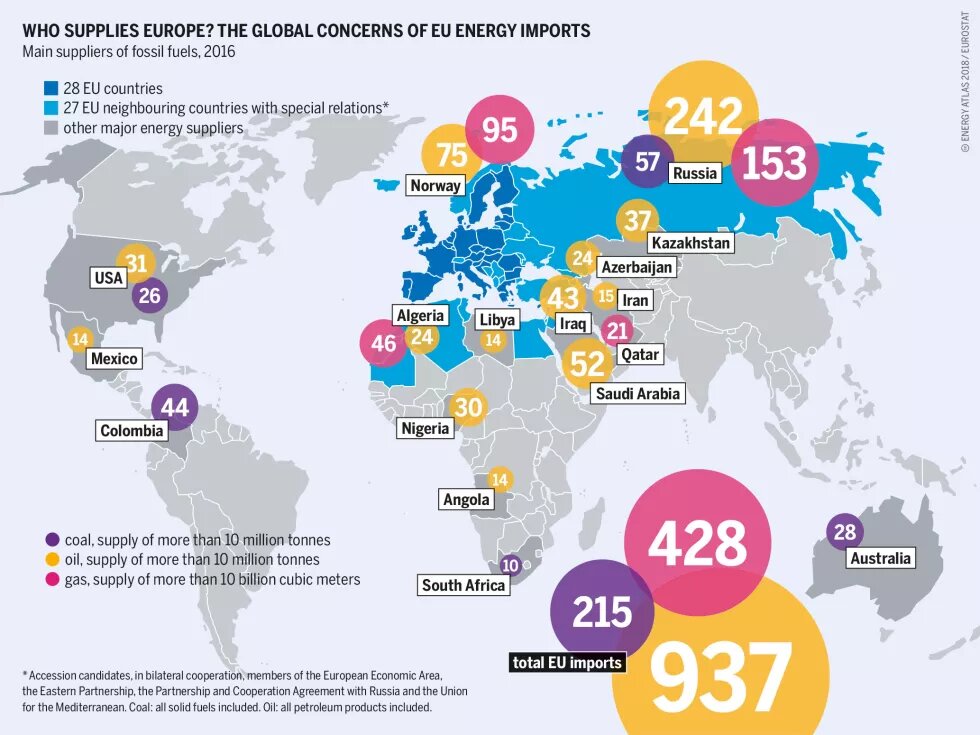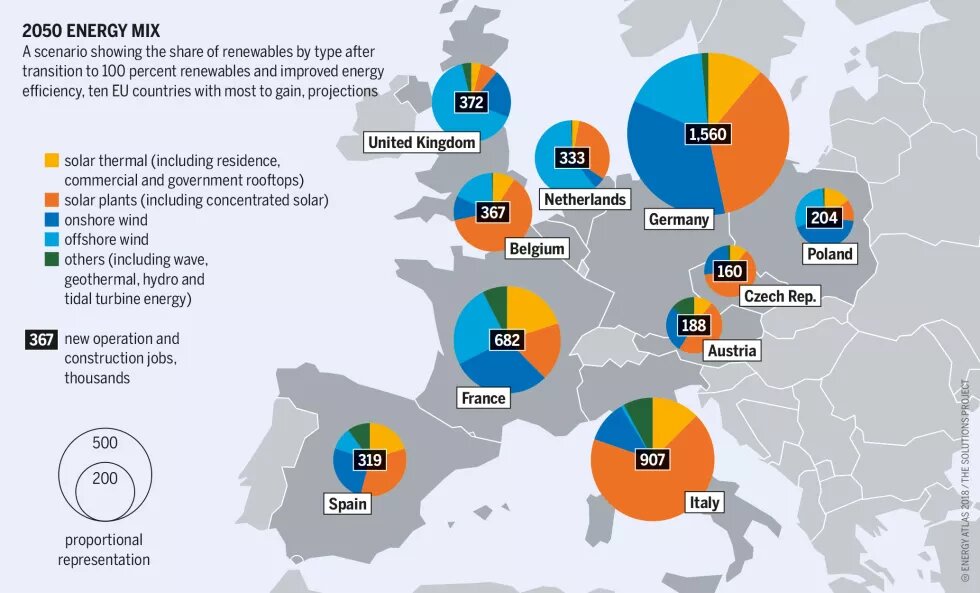
PUBLICATION
The Energy Atlas depicts the state of Europe’s energy transition, combining facts on renewable energy in Europe and 45 innovative graphics, with country-by-country data, across 20 chapters. It is a joint publication of the European Renewable Energies Federation, Friends of the Earth Europe, the Green European Federation and the Heinrich Böll Foundation that was launched in April 2018.
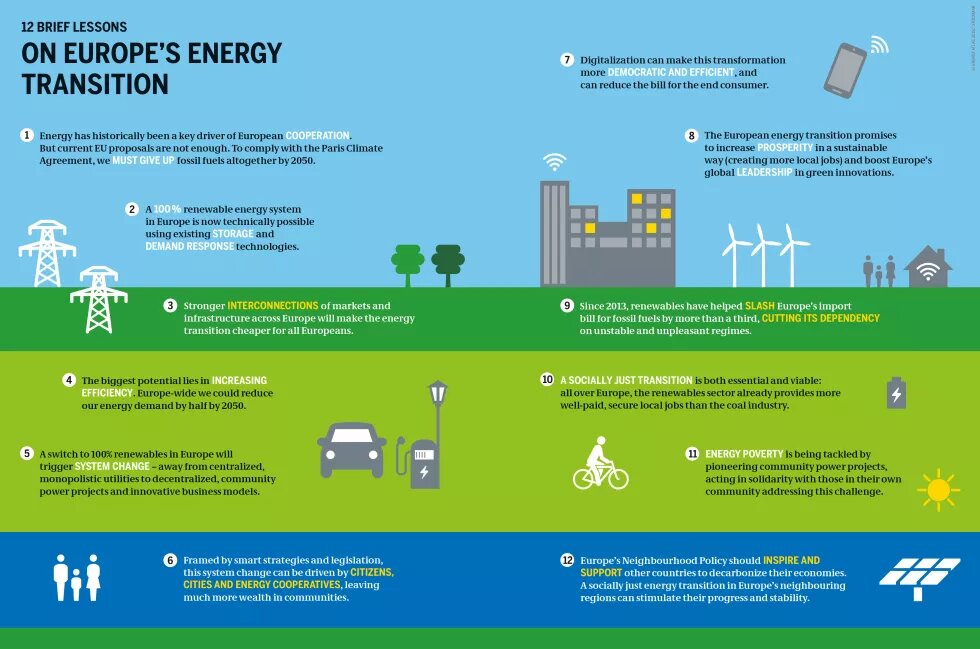
The Energy Atlas reveals that:
- Technology now available makes a 100% renewable energy system viable – with today’s smart energy storage, sector connections, and demand response tools helping to overcome the longstanding challenge of variable supply;
- Cities and ‘energy citizens’ are at the vanguard of Europe’s energy transition – with Europe’s energy system shifting to greater democratisation and decentralisation;
- An economic transformation is taking place, with more Europeans now employed in well-paying and secure jobs in the renewables sector than are employed in the coal industry.
Key finding 1: A 100% renewable fossil fuel-free energy system is now viable
- Modern storage and demand response technologies are now advanced enough to allow the longstanding renewable energy challenge of variable supply to be overcome. Scenarios from research organisations such as Ecofys suggest these could help to meet Europe’s energy needs even based on currently available renewable energy generation technologies, without any need for ‘backup’ nuclear or ‘dispatchable’ fossil fuel energy. (See Figure 1)
- High levels of energy efficiency and stronger energy interconnections across Europe make a 100% renewable energy system possible. The biggest potential lies in increasing efficiency. Europe-wide we could reduce our energy demand by half by 2050. This means less renewable energy needs to be provided or stored.
- Connecting sectors, such as heat, cooling, electricity, and electric transport would unlock the storage potential of water in heating systems along with millions of batteries in Electric Vehicles.
- The switch to 100% renewables in Europe entails energy system change – away from centralised monopolistic utilities to decentralised community and citizen based renewable power projects and innovative business models. (See Figure 2)
Key finding 2: European level cooperation and interconnectivity aids the energy transition across the continent
- Only continent-wide interconnectivity makes the transition to 100% renewable energy possible – in order to tap into the widest pool of renewable energy sources. The energy transition can only succeed as a European project.
- Europe currently leads the world in research and development in renewables, largely backed by cooperation projects such as Horizon 2020.
- The energy transition is also a chance for Europe to succeed globally and regain its position as a world leader – Europe’s renewable sector was second in the world in 2014, but it has now fallen to fifth, behind China, the US, Japan and Brazil. However, to achieve this goal, a stable investment environment is needed. (Economy pg. 15)
Key finding 3: Cities and ‘energy citizens’ are at the vanguard of Europe’s energy transition – not the big Energy Giants
- Countries with the highest share of renewables growth have the highest share of citizen participation in the transition. In 2017, Denmark had 74% of its power mix coming from renewables, and Germany 30% – 42% of which was installed by citizens and energy cooperatives. (See Figure 3)
- In 2050, projections suggest ‘energy citizens’ could produce twice as much power as nuclear power stations produce now. (See Figure 4)
- If it were counted as a company, citizen solar energy just in Germany would now rank within Europe’s top 15 largest energy retailers, producing 79 terawatt hours of electricity. (See Figure 5)
- Cities are frontline players in Europe’s energy transition. They consume over two-thirds of the world’s energy and account for 70 percent of emissions, yet they are committing to ambitious climate action plans. 7,700 local and city authorities across Europe have committed to ambitious renewable energy plans through the European Covenant of Mayors. In Paris, 1,000 local leaders have committed to go completely carbon neutral by mid-century. Paris, Copenhagen and Oxford have all committed to bans on petrol and diesel cars well before national phase-outs.
Key finding 4: A new kind of prosperity is emerging, with less dependence on energy imports and more local jobs
- An economic transformation is taking place, with more Europeans now employed in well-paying and secure jobs in the renewables sector than are employed in the coal industry. In 2016, there were 1.1 million jobs in renewable energy in the EU, 334,000 of which in Germany. (See Figure 6)
- The European energy transition has a high potential to increase prosperity (e.g. more local jobs) and to boost Europe’s global leadership in green innovations. Local renewable energy projects in particular provide 8 times more local economic value than projects owned by outside developers.
- As of 2016, the EU still imports 54% of its energy, 428 million tonnes of gas, and 937 million tonnes of oil, costing €208 billion in import costs. However, take-up of renewables has already helped slash Europe’s import bill for fossil fuels by more than 35% since 2012 (import costs of fossil fuels were €457 billion). (See Figure 7)
